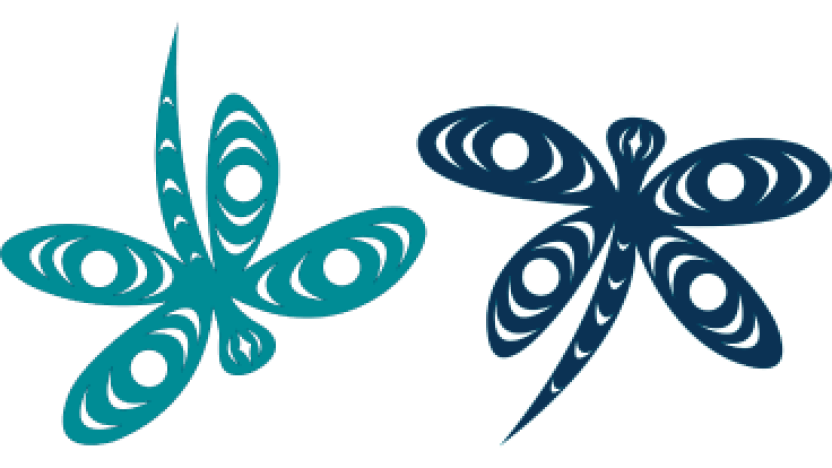Household leaks account for up to 14% of all indoor water use. Simple and inexpensive repairs can help prevent our drinking water from being wasted and save you money. Check your faucets and toilets for leaks at least once a year to reduce the waste of drinking water.
Ensure you know the location of your main water shut-off in case of an emergency water leak. The main water shut off is often near the hot water tank, in the basement, mechanical room or crawlspace. Remember to turn it off when heading out of town.
Toilets
High volume water leaks often come from toilets. Toilet leaks are usually silent, which makes them hard to detect, and are usually caused by a worn or misaligned part. A toilet that continues to run after flushing could be wasting 20–40 litres per hour—which adds up 175,200 to 350,400 litres per year.
Faucets and Showerheads
Leaking faucets and showerheads are big water wasters, but they are easier to detect than toilet leaks. An intermittent drip from your faucet or showerhead can waste more than 35,000 litres of water a year, enough to fill a bathtub over 100 times!
Look for worn washers and "o" rings inside the showerhead and faucet. A leaky showerhead may also need a tighter connection between the showerhead and the pipe system and can be fixed with pipe tape to secure it. Repairing leaky faucets is usually a straightforward and inexpensive job, but worthwhile as a little drip can waste lots of water and dollars.
Pipes
A leaking service line or pipe in your home can add up to serious water waste. A small hole in a pipe (1.5mm) wastes 280,000 litres of water in a three-month period. That is enough water to do about 900 loads of laundry. Look for unexpected increases in your water bill. Make sure to contact a plumber you trust for bigger repairs!
Irrigation Systems
Whether you have an in-ground system, a single oscillating head or a garden hose, check each spring to make sure it was not damaged by frost or freezing in winter. During the irrigation season, regularly check your system carefully for leaks. The average garden hose delivers 25 litres of water per minute, so a thin split in the hose or a poor coupling could be wasting large amounts of water. Ensure the outdoor faucet is turned off after each use; even small drips add up to big waste.
Inspect your irrigation system at least once a year, during the day when you can see any problems. Turn on each zone one by one and closely scan for issues.
Look for:
- Leaks at the joints between the sprinklers and the piping.
- Heads that do not pop up fully or are titled or don't close properly.
- Loose connections between all the valves and other components and ensure that the valves can shut.
- Wet patches in your lawn that do not dry.
- Sprinklers watering the driveway, house or sidewalk.
- Check your hose bibs and replace worn o-rings. Each winter, make sure your hose bib is turned off and your hose is not attached. To prevent water freezing and splitting the hose, insulate your hose bib.
Contact your irrigation contractor for a system check-up. Use water as wisely and effectively as possible. Consider using micro/drip irrigation and use a watering can whenever possible.
- Check out the CRD Irrigation Maintenance Series.
Detecting a Leak with your Water Meter
The best way to check for overall leaks is to use your water meter. Follow these simple steps to determine if you have a leak:
Fix a Leak Week
Mark your calendars for Fix a Leak Week! In 2025, Fix a Leak Week runs from March 17-23.
Fix a Leak Week is an annual campaign that educates homeowners about leak detection best practices to reduce the amount of potable water loss in the capital region.
To help residents proactively look for leaks in their homes, the CRD distributes Fix a Leak Week kits throughout the region for residents to pick up. These kits include toilet dye tabs, a bag to measure the flow rate of the showerhead, an aerator to increase the efficiency of your faucet, and informational handouts to learn more.
Participate in Fix a Leak Week and track down household leaks using a free leak detection toolkit provided by the CRD.
Toolkits can be picked up during Fix a Leak Week across the region at the following locations:
| Location | Address |
|---|---|
| CRD Headquarters (front reception) | 625 Fisgard St., Victoria, BC V8W 1R7 |
| CRD Integrated Water Services (utility billing reception) | 479 Island Hwy., Victoria, BC V9B 1H7 |
| Central Saanich Municipal Hall | 1903 Mount Newton Cross Rd, Saanichton, BC V8M 2A9 |
| Colwood City Hall | 3300 Wishart Rd., Victoria, BC V9C 1R1 |
| Esquimalt Municipal Hall | 1229 Esquimalt Rd., Esquimalt, BC V9A 3P1 |
| Langford City Hall | 2nd Floor, 877 Goldstream Ave., Langford, BC V9B 2X8 |
| North Saanich Municipal Hall | 1620 Mills Rd., North Saanich, BC V8L 5S9 |
| Oak Bay Municipal Hall | 2167 Oak Bay Ave., Victoria, BC V8R 1G2 |
| Saanich Municipal Hall | 770 Vernon Ave., Victoria, BC V8X 2W7 |
| Sidney Town Hall | 2440 Sidney Ave., Sidney, BC V8L 1Y7 |
| Victoria City Hall | 1 Centennial Square, Victoria, BC V8W 1P6 |
| View Royal Town Hall | 45 View Royal Ave., Victoria, BC V9B 1A6 |

